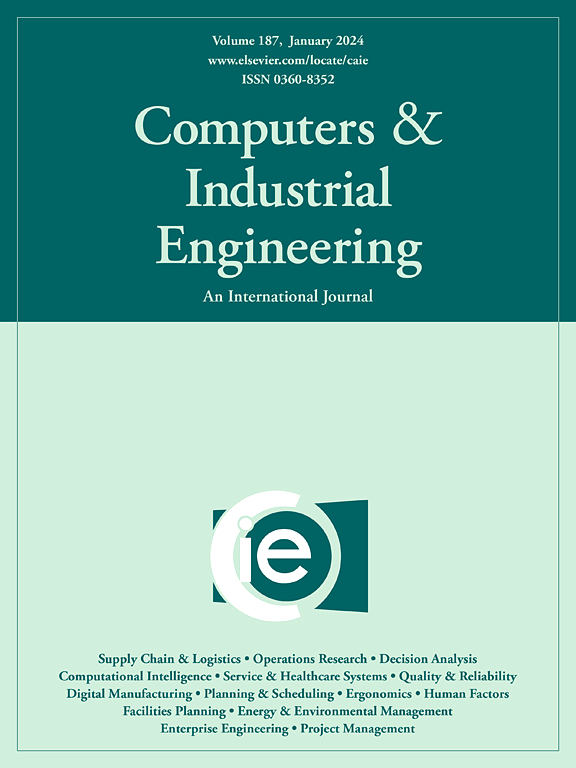Location-routing problem for customized product delivery considering assembly delay
IF 6.7
1区 工程技术
Q1 COMPUTER SCIENCE, INTERDISCIPLINARY APPLICATIONS
引用次数: 0
Abstract
The delivery of assemble-to-order (ATO) products differs from that of standard products because the assembly process begins after receiving customer orders. As both assembly and distribution work have recently been outsourced to third-party logistics (3PL), the resulting preparation time gap between ATO and standard products imposes new time constraints on 3PL operations. To optimize delivery strategies and minimize total costs for 3PL providers under the new condition, this study addresses the location-routing problem for customized product delivery considering assembly delay (CPADLRP), which determines the location strategy of forward assembly warehouses and distribution strategy of ATO products simultaneously. We formulate the problem as a mixed-integer programming model, incorporating a novel variation of time window constraints with dynamically changing start time boundaries. An improved adaptive large neighborhood search (ALNS*) algorithm is proposed to solve this problem, incorporating a principal-component-analysis-based k-means and four problem-specific operators to the basic ALNS. Compared with the Gurobi Solver and two other typical heuristic algorithms, ALNS* achieves better solutions more efficiently. Moreover, we conduct a series of sensitivity analyses on the main factors of the problem and drive several managerial insights for 3PL providers to reduce total costs. The sensitivity analysis on the proportion of customized orders also verifies the importance of considering the assembly delay in the LRP.
考虑装配延迟的定制产品交付定位路径问题
按订单组装(ATO)产品的交付与标准产品的交付不同,因为组装过程是在收到客户订单后开始的。由于组装和分销工作最近都外包给第三方物流(3PL),因此ATO和标准产品之间的准备时间差距对第三方物流业务施加了新的时间限制。为优化新条件下第三方物流供应商的配送策略并使总成本最小化,本文研究了考虑装配延迟的定制产品配送位置路径问题(CPADLRP),该问题同时决定了正向装配仓库的选址策略和ATO产品的配送策略。我们将该问题表述为一个混合整数规划模型,该模型包含了一种新的时间窗约束变化和动态变化的开始时间边界。为了解决这一问题,提出了一种改进的自适应大邻域搜索(ALNS*)算法,该算法将基于主成分分析的k-means和四个问题特定算子结合到基本ALNS中。与Gurobi Solver和其他两种典型的启发式算法相比,ALNS*能够更高效地获得更好的解。此外,我们对问题的主要因素进行了一系列敏感性分析,并为第三方物流供应商提供了一些管理见解,以降低总成本。对定制订单比例的敏感性分析也验证了在LRP中考虑装配延迟的重要性。
本文章由计算机程序翻译,如有差异,请以英文原文为准。
求助全文
约1分钟内获得全文
求助全文
来源期刊

Computers & Industrial Engineering
工程技术-工程:工业
CiteScore
12.70
自引率
12.70%
发文量
794
审稿时长
10.6 months
期刊介绍:
Computers & Industrial Engineering (CAIE) is dedicated to researchers, educators, and practitioners in industrial engineering and related fields. Pioneering the integration of computers in research, education, and practice, industrial engineering has evolved to make computers and electronic communication integral to its domain. CAIE publishes original contributions focusing on the development of novel computerized methodologies to address industrial engineering problems. It also highlights the applications of these methodologies to issues within the broader industrial engineering and associated communities. The journal actively encourages submissions that push the boundaries of fundamental theories and concepts in industrial engineering techniques.
 求助内容:
求助内容: 应助结果提醒方式:
应助结果提醒方式:


